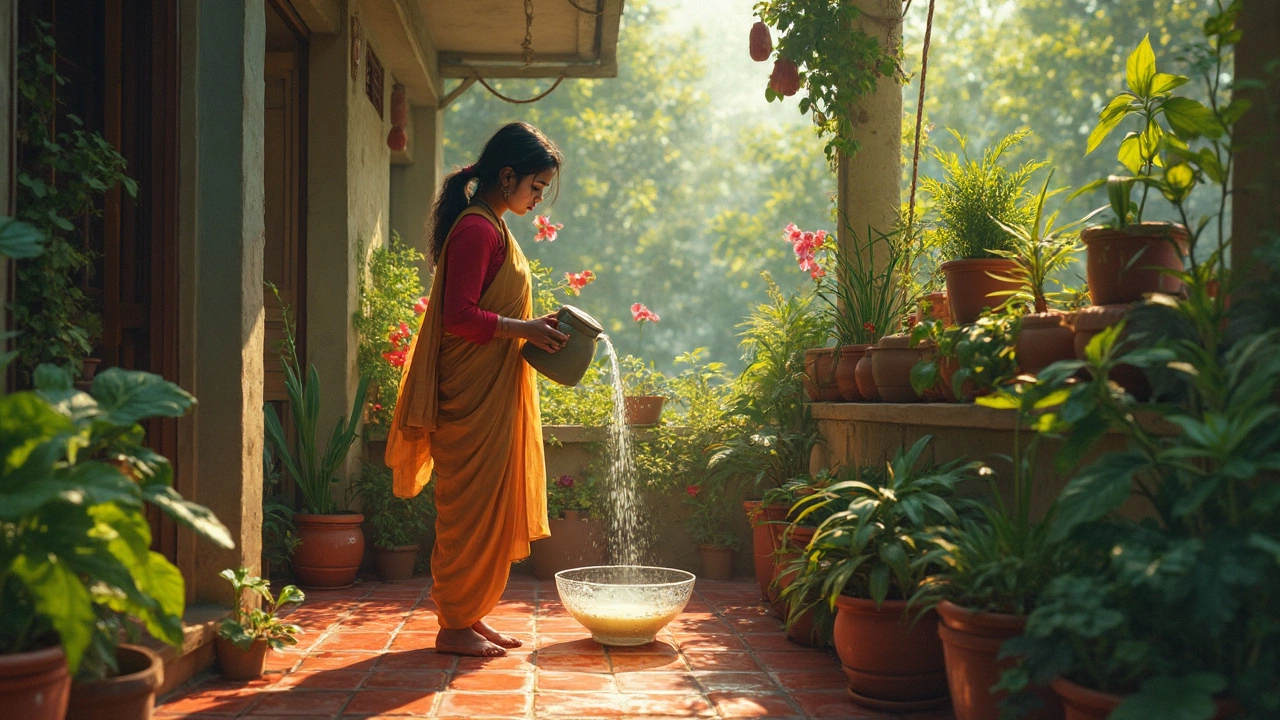Tap water straight from the faucet isn’t always ideal for houseplants. Chemicals like chlorine and minerals can mess with plant health. This article breaks down why neutralizing tap water matters and how you can easily do it at home. You’ll learn safe, quick methods to make tap water friendlier to your indoor green buddies. Ready to see stronger, happier plants?
Tap Water pH: What It Means for Your Plants and How to Fix It
When you water your plants, you're not just giving them H2O—you're giving them whatever's in your tap water pH, the measure of acidity or alkalinity in your household water supply. Also known as water acidity level, it directly affects how well your plants absorb nutrients, and in India, where water sources vary wildly from city to village, this one number can make or break your garden. Most people assume tap water is fine because it’s safe to drink. But plants don’t care if it’s safe for humans—they care if it’s safe for their roots. If your tap water is too alkaline (above 7.5), iron and zinc vanish from the soil. Too acidic (below 6), and you risk poisoning your plants with heavy metals. It’s not magic. It’s chemistry.
That’s why soil pH balance, the acidity level of the dirt your plants grow in and plant water quality, how clean and chemically suitable your water is for plant health are locked together. In Delhi, where water is often hard and chalky, hydrangeas turn green instead of blue. In Bangalore, where groundwater is slightly acidic, zinnias struggle to bloom. Even if you use the best compost, the best pots, and the most careful watering schedule, bad water can undo it all. And it’s not just about pH—chlorine, fluoride, and dissolved salts in tap water build up over time, suffocating roots and starving plants. You don’t need a lab to check this. A $10 test strip from a local nursery tells you more than years of guesswork.
Fixing this isn’t about buying expensive gadgets. It’s about understanding your water. Let it sit out overnight to let chlorine evaporate. Mix in a splash of vinegar if it’s too alkaline. Use rainwater when you can—it’s nature’s perfect pH for plants. If you’re growing in containers, flush the soil every few months to wash out salt buildup. And if you’re wondering why your basil keeps turning yellow or your tomatoes won’t fruit, check your water first. Most gardeners blame the sun, the soil, or the bugs. But the real culprit is often sitting right there in the hose.
Below, you’ll find real fixes from Indian gardeners who’ve been there—how to test your water at home, what plants suffer most from hard water, and how to adjust without spending a rupee more than you need to. No fluff. No theory. Just what works in Indian homes, balconies, and backyard plots.
